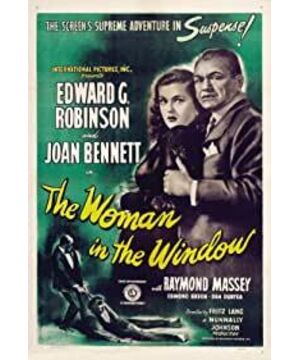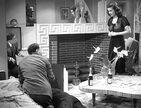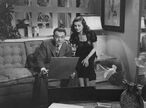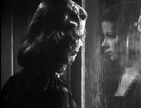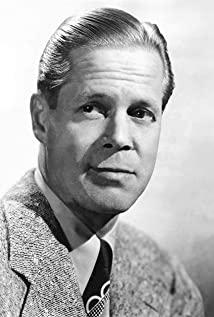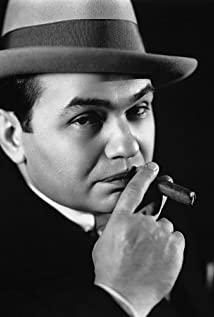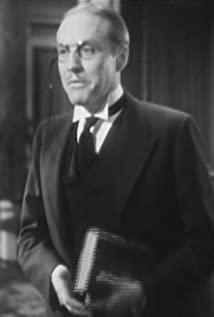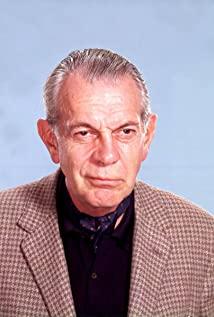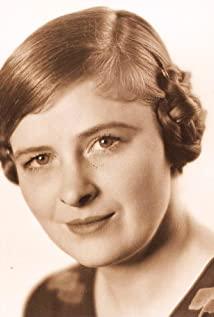Mirror, one of Lang's favorite props. Pietro in "M is the Murderer" discovers that his identity is exposed, and the beginning of "Furious", Qu Sai and Yang both long for a better life, which are closely related to the mirror in the shop window. And the heroine of the film, Joan Bennett, is a professor at New York University (Edward G. Robinson). Robinson came out for the first time when he stopped and stared at a glamorous portrait of a woman in the middle of the shop window. Faced with the mysterious and glamorous woman who appeared like a ghost and her unexpected offer, Robinson, who had just bid farewell to his wife and son, had been sensibly admonishing himself that he "has reached the age when he could not withstand temptation and adventure," but he still couldn't help but after midnight. Went to her apartment. But the romance hasn't started yet, and disaster will soon come. The rich man who took care of this woman suddenly returned home somehow. As soon as he walked in, he saw other men in the room. In a rage, the man couldn't help but rushed forward to kill Robinson. In panic, Robinson grabbed the scissors that Bennett had handed and stabs the opponent's back a few times...A standard "femme beauty" led to the start of a murderous film noir. However, will the follow-up plot of the story really develop as the audience guessed? Edward Robinson, early Hollywood acting superstar. Once won the best actor at Cannes Film Festival for his wonderful performance in House of Strangers (1949). However, at the beginning of the film where the protagonist is seduced, Robinson's performance is not very dedicated and lacks emotional interaction with the heroine. Especially in the eyes. Is this because of its external image, it seems that it is not convincing to portray a successful middle-aged man who can be attracted by a glamorous woman at first sight? Ha ha. But after the murder happened, when the story needed to turn to portray the "murderer"'s emotional state of mind, such as anxiety, despair, and constant fear of the truth being revealed, Robinson's performance was as good and in place as ever. However, in general, it is not as impressive as his role as a wise and alert insurance company claims manager in Billy White's "Double Compensation" which was released at the same time. The heroine actor Joan Bennett (Joan Bennett) does have the classic and glamorous beauty of Hollywood female stars of that era, but the performance can only be said to be acceptable. The combination of the two stars seems to be more favored by Lang. Just a year later, they starred in Lang’s more influential noir film "Scarlet Street (1945)". The filming took less than 2 months. Most of the shots were taken in the studios of MGM, RKO, and Paramount. The black ceiling and closed stage successfully created a claustrophobic night scene atmosphere for the film. RKO arranged its premiere in Los Angeles in October 1944. On January 25 of the following year, it was released in New York. The film’s domestic box office totaled 2.1 million U.S. dollars, and the overseas film market, which had just recovered after the war, also reached 1.3 million. The biggest controversy of this film is its ending. At that time, some critics pointed out that the use of alternative ending techniques for the film was only for the purpose of passing film censorship and box office. Lang denied this. He said that it is not only a simple "harmonious" ending, but also as a means to provide an unexpected suspense for the development of the story! But some film critics who have been skeptical obviously disagree with the director's views. They believe that the previous narrative has forced Lang into a blind spot, and the **** ending can make him escape and find a way out. Lang also denied this. In any case, this veteran director has always faced various media controversies about the details of the film. Of course, film reviews are not all questioning. A forum in New York believed that the ending of "Green Window Movie" was handled easily, making it an excellent and suspenseful murder mystery drama as well as "Double Compensation". But whether it was Lang’s intentional action or restricted by external factors such as the Hollywood genre film model, the controversy itself more or less reflected Lang’s embarrassing artistic creation situation after moving to Hollywood.
View more about The Woman in the Window reviews


